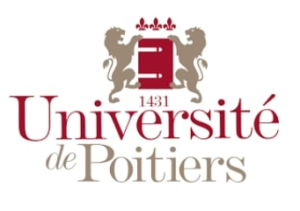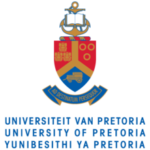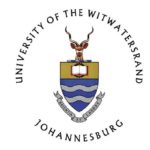Teaching
Since 2023, within the frame of the Junior Professor Chair CNRS, I have been involved in the following courses of the Master Biodiversité, Ecologie et Evolution of the University of Poitiers (France) of the Paléontologie track:

- Methods in virtual paleontology
- Climate and human evolution
I am the coordinator of the course entitled Biologie Virtuelle 3D from the doctoral school Rosalind Franklin of the University of Poitiers.
As a lecturer in Human Origins at the University of Cambridge (UK), I have been involved in the following Biological Anthropology courses offered by the Department of Archaeology from 2020 to 2023 (for further information, see link):
- B1 – Humans in Biological Perspective (lecturer)

- B3 – Human Evolution (lecturer)
- B12 – The Inner Ape: Hominin Origins and Evolution (coordinator)
I also contributed to the first-year Evolution and Behaviour course of the Natural Sciences Tripos (Part IA, link).
From 2017 to 2020, I taught courses in paleoanthropology to undergraduate students enrolled in Bachelor in Medical Sciences (University of Pretoria) and Bachelor of Science with Honours in the field of Palaeontology degree (University of the Witwatersrand) in South Africa. I delivered lectures on:
-


Introduction to paleoanthropology (Univ. Pretoria, ANA 215)
- Human brain evolution (Univ. Witwatersrand, PALP 4013
- Introduction to epistemology (Univ. Witwatersrand, PALP 4013)
- Imaging techniques and quantitative analyses in paleontology (Univ. Witwatersrand, PALP 4012)
Student supervision
Since 2017, I have supervised 7 Honours/Bachelor students, 14 Master students, 4 PhD students and 2 post-doctoral researchers from the University of Barcelona (Spain), the University of Cambridge (UK), the University of Poitiers (France), the University of Pretoria (South Africa), the University of Toulouse (France) and the University of the Witwatersrand.
Post-doctorat
- C. Theye (2024-2026; University of Poitiers, France): Walking with our ancestors: how did locomotor behaviour influenced the brain of fossil hominins?
- J. Aramendi (2023-2025; University of Cambridge, UK): Exploring locomotor diversity in the human hominin fossil record based on long bone external morphology.
Thèse
- H. Hill (2024-2027; University of Poitiers, France): Evolution of brain metabolism within the human lineage.
- G. Castelli (2023-2026; University of Cambridge, UK): How did the masticatory system evolve? Investigating teeth and bone microstructure of extant and fossil apes through synchrotron X-ray microtomography.
- E. de Jager (2021-2025; University of Cambridge, UK): How did the human brain evolve? Tracking cerebral changes in the fossil hominin record using advanced imaging techniques and 3D modelling (link).
- F. Bouchet (2019-2022; Institut Català de Paleontologia Miquel Crusafont, Spain): Phylogenetic implications of the craniodental morphology of Pliobates cataloniae (link).
Master
- B. Presbury (2024-2025; University of the Witwatersrand, South Africa): Quantitative and qualitative morphological analysis of the StW 573 ribcage.
- S. Page (2024-2025; University of the Witwatersrand, South Africa): Non-Hominin Primates: the ecomorphological analysis of fossil monkey post-crania to assess environmental changes between Member 4 and Member 5.
- G. Gourdet (2023-2024; University of Poitiers, France): Description et identification de restes crânio-dentaires de cercopithecidés du Membre E de la formation de Shungura.
- E. Dupont (2023-2024; University of Poitiers, France): Variation morphologique de la face des hominoïdes : application à la reconstruction d’un crâne d’hominine fossile.
- M. Challin (2023-2024; University of, France): Variation de l’épaisseur de la voûte crânienne chez les hominines fossils du Plio-Pléistocène et identification des restes crâniens de Koobi Fora.
- C. Gupta (2022-2023; University of Cambridge, UK): Interaction between two sympatric hominins – Paranthropus boisei and Homo habilis.
- G. Hodgkins-Brown (2021-2022; University of Cambridge, UK): The investigation of the internal bone structure of the fossil phalanx StW 668 from Sterkfontein Caves (South Africa) and its implications for hominin locomotion and tool use.
- J. Shiffert (2021-2022; University of Cambridge, UK): Assessing the age at death, dental developmental pattern and taxonomic status of a Limnopithecus mandible from Songhor using synchrotron data.
- M. Kocsis (2020-2021; University of Cambridge, UK): A cross-species comparison of primate group structure: links between life history traits and social organisation.
- W. Silcox (2020-2021; University of Cambridge, UK): Does the size and organization of the insular cortex predict social behaviour in Pan?
- M. Holl (2020-2021; University of Cambridge, UK): Towards an aetiology for hyperostosis frontalis interna: a study of pathological thickness variation of the diploic and cortical frontal bones in fossils and extant humans.
- M. Babutsi (2020-2022; University of the Witwatersrand, South Africa): Reconstructing locomotor behaviour of southern African Plio-Pleistocene cercopithecoids: evidence from functionally-related inner structural arrangement of the trabecular bone.
- F. Bouchet (2017-2018; University Toulouse Paul Sabatier, France): A high-resolution microtomographic study of the Papio specimen UW 88-886 from the early Pleistocene site of Malapa, Gauteng, South Africa (link).
- E. de Jager (2017-2018; University of Pretoria, Afrique du Sud): Exploring an innovative method for the automatic recognition of cortical sulci in cranial endocasts (link).
Honours/Bachelors
- J. Gathercole (2022-2023; University of Cambridge, UK): The association between teeth morphology and diet: Papio, Theropithecus and the implications for hominin evolution.
- T. Pathmaraja (2021-2022; University of Cambridge, UK): When did the hominins start running?
- H. Hill (2021-2022; University of Cambridge, UK): Brain evolution and language: a comparative 3D analysis of Wernicke’s area in fossil hominins, extant humans and chimpanzees (lien).
- C. Pestana (2020; University of the Witwatersrand, South Africa): Phylogenetic ancestral character reconstruction using maximum likelihood of hominin encephalization (lien).
- C. Thorvaldsson (2019; University of the Witwatersrand, South Africa): Comparative description of new cercopithecoid dental material from the Plio-Pleistocene sites of Sterkfontein Member 4, South Africa.
- M. Babutsi (2019; University of the Witwatersrand, South Africa): Locomotor and habitat reconstruction of Plio-Pleistocene cercopithecoids: evidence from trabecular bone organisation.
- B. Mataboge (2018; University of the Witwatersrand, South Africa): A microtomographic study of the StW 669 hominin molar from the Milner Hall, Sterkfontein Caves, South Africa. Les résultats de cette étude ont été publiés dans le journal South African Journal of Science (lien).